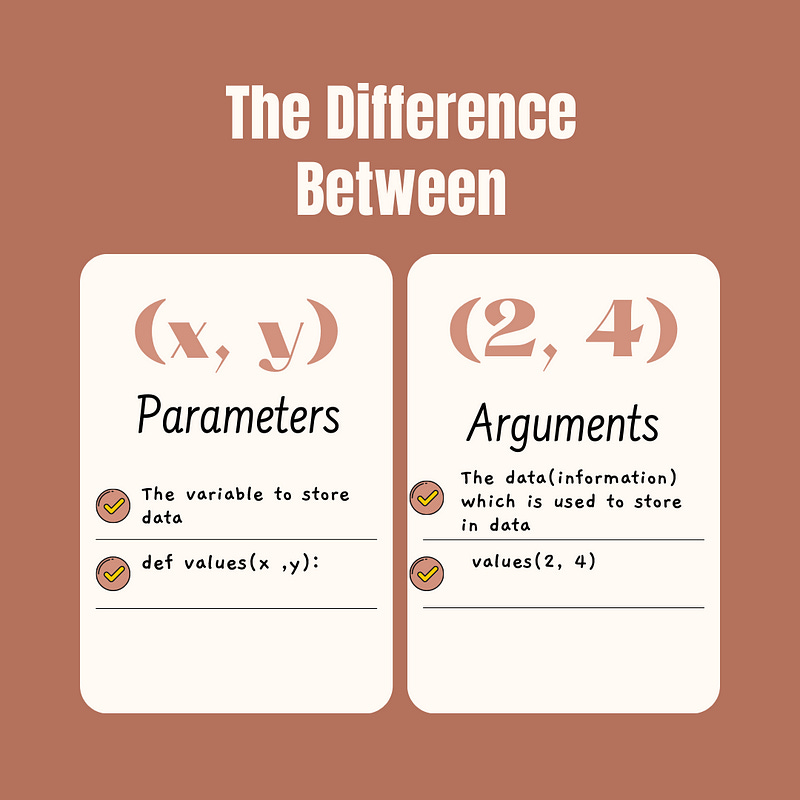Difference between Arguments and Parameters in python
The terms arguments and parameters are often used interchangeably, But they do have slightly difference in these both terms.
The terms arguments and parameters are often used interchangeably, But they do have slightly difference in these both terms.
A parameter is a variable that is defined in the function signature or method definition. It specifies what kind of value the function or method expects to receive when it is called. For example:
def add_numbers(x, y):
return x + yIn this function, `x` and `y` are parameters. They define what kind of values the `add_numbers` function expects to receive when it is called.
An argument, on the other hand, is the actual value that is passed to a function or method when it is called. For example:
result = add_numbers(2, 3)In this code, `2` and `3` are arguments. They are the actual values that are passed to the `add_numbers` function when it is called.
To summarize, a parameter is a variable that is defined in the function or method definition, while an argument is the actual value that is passed to a function or method when it is called.
Here is another example to see the difference between these two terms…
def calculate_average(*numbers):
total = 0
for number in numbers:
total += number
return total / len(numbers)
def print_result(result, message="The result is:"):
print(message, result)
average = calculate_average(1, 2, 3, 4, 5)
print_result(average, message="The average is:")In this code, there are two functions: `calculate_average` and `print_result`.
The `calculate_average` function takes any number of arguments (using the `*` syntax), calculates their average, and returns the result.
The `print_result` function takes two arguments: the result to be printed and an optional message to be printed before the result. If no message is provided, it defaults to “The result is:”.
In the main body of the code, we call the `calculate_average` function with five arguments (1, 2, 3, 4, 5) and assign the result to a variable called `average`. We then call the `print_result` function with the `average` as the first argument and a custom message (“The average is:”) as the second argument.
When we run this code, it will print “The average is: 3.0” to the console.
In this example, `numbers` is a parameter in the `calculate_average` function definition, while `1`, `2`, `3`, `4`, and `5` are arguments that are passed to the function when it is called. `result` and `message` are parameters in the `print_result` function definition, while `average` and `”The average is:”` are arguments that are passed to the function when it is called.



